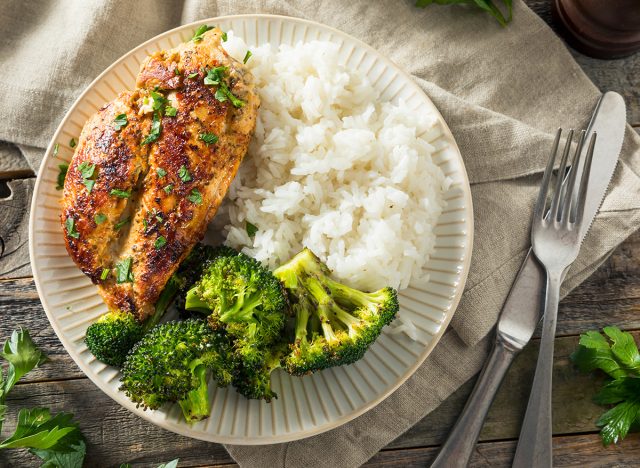Kim Kardashian's Bodybuilder Trainer Mel Alcantara Reveals Tricks to "Being Less Muscular"
When Kim Kardashian wanted to transform her body a few years back, she reached out to bodybuilder Melissa Alcantara. The fitness influencer and trainer was famous for her ultra fit physique and wasn't afraid of lifting heavy weights to bulk up. However, this week she revealed that has transformed her physique and majorly slimmed down. "My journey to being less muscular is coming along. No matter what I do I will always have an athletic build, it's just the way I am naturally (genetics)," she writes in a new Instagram post, revealing her 140-pound figure. "What I've done these past 2 years to accomplish this," she continues.
Fewer Workouts
The first thing Melissa did was reduce her workouts. "Lift 3-4 times a week, not 6 like I used to," she writes in the post.
Lighter Weights

The second thing Melissa did to bulk down? "Not lift as heavy," she writes, "mostly with upper body exercises," she says.
Related: I Lost 40 Pounds in 5 Months. Here Is What I Eat in a Day
More Focus on Lower Body

She also shifted her focus away from her upper body. "Focus on lower body exercises," she writes. "I'm way more muscular upper body."
Diet

When it comes to her diet, Mel changed it up. "Eat intuitively, lots of rice and chicken and some drinks here and there," she says.
More Rest

"More resting and sleeping and less stress," also helped Mel achieve her body goals, she writes.
Living Life

Overall, she maintains that she shifted her focus away from bodybuilding. "Basically, I'm just living life doing other things than lifting weights and being in the gym," she concludes.
Related: 15 Proven Ways to Sculpt Your Dream Body by An Expert Coach
Here Is Why She Decided to Slim Down

One of her followers was curious why Alcantara decided to be less muscular. "I just want to feel more feminine and fit into nice dresses. I've always had this dilemma because I love lifting heavy and feeling strong but I also want to look softer and feminine so the struggle is real lol. I'm also 39 years old and I'm tired hahahaha. I just want to live more and do things. Just so tired of just looking aesthetic," she responded.
💪🔥Body Booster: If you want to lose muscle, lifting lighter weights and working out less will help you slim down fast. And if you enjoyed this article, don't miss 12-3-30 Walking Method: 20 Proven Tips to Lose Weight Faster.





